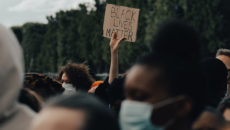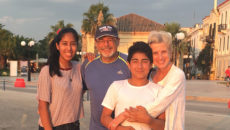Q: We are considering what elementary school would be best for our child when she starts kindergarten next year. She is biracial (Latino and African-American) and my partner and I are two white moms. Our neighborhood public school is becoming stronger, and is 98 percent Latino — but she’d be the only Black child. There are many good charter schools that have more of a distribution of Latino, Black, white, and Asian students — but her friends would all live farther away and the school would have less of a community connection. What would you do?
Members of adoptivefamiliescircle.com respond:
“Go for diversity. I cannot stress enough how important it is for a child to NOT be the ONLY in her class. My kids are both biracial (black and white). We’ve moved three times, and always tried to find the most diverse school we could. Often, this was a charter instead of the neighborhood schools. We found friends. My kids still play with the neighborhood kids outside of school, in addition to having their school friends.”
“Go with the more diverse school! Your daughter needs to be able to look around her class and school and see people who look like her. They do not need to be her friends. I totally missed this until my multiracial son who identifies as Black got to kindergarten. I had him in the best all-boys school in town, which had virtually no diversity. We are still trying to recover from my mistake two years later.”
“My late wife and I adopted two children, one black, the other Korean. They went to a Catholic school, and their pictures were in every flyer the school put out to recruit students; they were the diversity. So I say go for diversity wherever you can, and make sure you have it in your friends as well as their playmates. A fully mixed environment is good whenever possible.”
“If a transracial adoptive family lives in a neighborhood with a school with no other children of color, the best advice I can give is to move. Before we accepted our first foster placement, we found a diverse neighborhood with excellent neighborhood schools. That said, I strongly believe school/education is the most critical factor to our children’s ability to successfully navigate society, and there are many opportunities to help your child ‘belong’ outside of school. Our Black daughter and her biracial sister both participate in competitive gymnastics. The teams are diverse, and being part of that close-knit group has been quite beneficial to both of them. Our other three children are Hispanic. One is involved in Karate, one in soccer, and the third is an accomplished artist and takes lessons at a local, diverse art center. And we chose a church with a diverse congregation. A successful multiracial family takes conscious fearless thought, and a lot of work that stops feeling like work after a few years. You’re doing the right thing.”
“Like you, I am a white mom, comfortably upper middle class, living in Los Angeles. My daughter is Latina. For kindergarten, I chose the neighborhood school, which was 85 percent Latino kids from socioeconomically disadvantaged backgrounds and 15 percent a mix of Korean and other Asian. My daughter was in a dual language Spanish program with all Latino kids in her classroom. There were no biracial families in the school. My daughter felt extremely uncomfortable at that school because no family looked like ours and she got constant questions from classmates who were not used to seeing biracial families, adoptive families, or any alternative type of family. Also two moms are very uncommon in a mostly Latino school. I speak Spanish well, but had trouble making friends with parents. The socioeconomic divide will be there as a difference, too, even if you wish it wasn’t. In the middle of first grade we switched to a highly diverse school (also dual language) and my daughter sighed a breath of relief. At this school (she is now in fifth grade) there is every type of family—biracial, multiracial, adoptive, two moms, two dads, etc., and is over 50 percent Latino. We fit right in, my daughter loves it, and has made so many friends…and I hang out with the Latina moms and practice my Spanish.”


